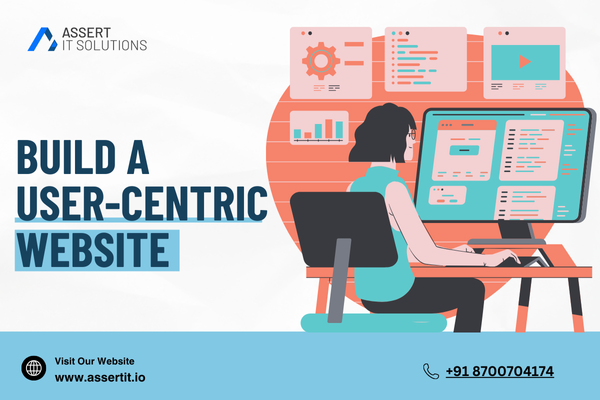In India, e-commerce is changing very quickly, which gives companies huge chances to reach more people and make more money. People are shopping more and more online, so it’s important for stores that aren’t online to switch to digital channels.
Statista says that India’s online shopping market will grow from $78 billion in 2021 to $200 billion by 2026.
This blog post talks about the steps you need to take to successfully move your offline business online, with a focus on the Indian market.
Why Should You Move Your Business Online?
Several strong reasons are behind the move from physical shops to online ones:
Reaching More Customers: Because e-commerce doesn’t depend on location, you can sell your goods all over India and reach more customers.
More Convenience: A Nielsen study shows that 79% of Indian consumers prefer shopping online because it is more convenient.
Cost savings: Keeping an online storefront up and running usually costs less than keeping a real storefront open. FICCI says that switching to e-commerce can cut costs by 15 to 20 percent.
Data-Driven Insights: E-commerce platforms do useful data that can help you figure out what your customers want. In India, companies that use data analytics have seen their sales go up by an average of 10 to 15 percent.
Step 1: Pick the Best Online Shopping Platform
For a smooth transition, it’s important to choose the right e-commerce site. Here are a few well-known sites for Indian businesses:
- Shopify is known for being easy to use, and it’s great for businesses of all kinds. It also has a number of payment gateways that work well with Indian transactions. Over 1.7 million businesses around the world use Shopify.
- WooCommerce is a WordPress tool that lets you make your store more flexible and unique. It works well for people who already know how to use WordPress.
- BigCommerce can be expanded and has many useful features, making it ideal for businesses that are already doing well and want to grow.
- Magento is known for having a lot of useful features. It lets you make a lot of changes, but you might need to know a lot about technology to do it.
Step 2: Make your website easy for people to use
Your website is like a window for your business, and it needs to appeal to people in India. These are important things to think about:
- Responsive Design: Make sure your website works well on mobile devices, since Statista says that 65% of online shopping in India is done on mobile devices.
- Localized Content: Use words and pictures that Indian viewers will understand. 56% of Indian users would rather see material in their own language, according to a report from Local Circles.
- Ability to navigate and search: A clean style that is easy to use helps people quickly find what they’re looking for. Add a powerful search function that lets people narrow down the results.
Step 3: Add products to the list
For the Indian market, each product page should be made better. Important parts include:
- Descriptive titles and detailed descriptions: Make it clear what the product does and how it helps people. If you want to connect with Indian customers, use local terms when it makes sense.
- Quality Images: Show the goods from different angles and in different settings to help customers get a better idea of what it is. Spreedly says that ads with more than one picture can bring in up to 75% more buyers.
- Price List and Currency Options: Show prices in Indian Rupees (INR) and be clear about taxes and shipping costs.
Step 4: Choices for shipping and delivery
India can be hard to ship to because of its geography. Here’s how to get around it:
- Local vs. National Shipping: If you want to ship things within the United States, you might want to work with local transportation services. For shipping within the country, work with well-known companies like Blue Dart and Delhivery.
- Shipping costs that are easy to see: Make it clear to customers how much shipping costs and how long it takes to arrive. Free shipping on orders over a certain amount can encourage people to buy; in India, 93% of people are more likely to shop at a store that gives free shipping.
- How to Return Items: Make a return policy that is clear, fair, and works for Indian buyers. Ecom Express did a study and found that 90% of people check return policies before they buy something.
Step 5: Setting up safe payment gateways
To gain customers’ trust in India, you need a safe way to pay. Think about integrating:
- Many people in India use and accept PayPal, Stripe, and Razorpay, which all offer safe ways to make payments.
- Giving Indian buyers local payment options like UPI, Paytm, or PhonePe can make shopping easier for them. PWC says that 40% of Indian customers prefer digital wallets as their main way to pay.
Step 6: Get the word out about your online shop
Once you’ve opened your online store, you need to use good marketing strategies to get people to come. For a complete plan, here it is:
- Search Engine Optimization (SEO): Use relevant keywords on product pages and blog posts to make them more visible in search results. Traditional marketing methods only get 1.7% of the deals they try to close. SEO, on the other hand, can get 14.6% of those deals.
- Social media marketing: Showcase your goods on sites like Instagram, Facebook, and WhatsApp, interact with your followers, and run targeted ad campaigns. According to Hootsuite, 54% of Indians who use social media do so to look into goods.
- Email marketing: To keep customers interested, make an email list and send focused campaigns with product suggestions, deals, and newsletters. For every ₹1 spent on email marketing, you get back 36 times that amount.
- Influencer Collaborations: Work with Indian influencers to reach more people and gain respect in the Indian market.
Step 7: Give Great Customer Service
When you’re doing business online in India, you need to have great customer service. Think about putting in place:
- Live Chat Support: Let people help you in real time on your website. This can help you answer customers’ questions right away and boost your sales rates.
- Support in Multiple Indian Languages: To serve a wide range of customers, if you can, offer customer service in more than one Indian language. 73% of Indian customers are more likely to buy from a business if the customer service staff speaks their local language.
- Comprehensive Frequently Asked Questions (FAQs): Answer common questions about shipping, returns, and how to use the product to make things clearer and cut down on help requests.
Step 8: Check and improve
Once your online store is up and running, it’s important to keep an eye on how it’s doing and keep making improvements. Important success indicators to keep an eye on are:
- Traffic to your website: Use tools like Google Analytics to find out where your visitors are coming from and which goods they are most interested in.
- Rate of Conversion: Check how well your website turns viewers into buyers. In India, the average conversion rate for e-commerce sites is between 2% and 3%. However, sites that do really well can get conversion rates of 5% or more.
- Customer Feedback: Ask for reviews and feedback to find out what areas of your business need to be changed and how satisfied your customers are.
Conclusion
Transitioning your offline business to an online e-commerce platform presents exciting growth opportunities in the Indian market. By following these steps—selecting the right platform, designing a user-friendly website, setting up products, implementing secure payment options, and executing effective marketing strategies—you can successfully navigate the complexities of e-commerce.
In today’s interconnected world, going online is not just a trend; it’s a strategic necessity. Embrace this change, adapt to your new audience, and watch your business thrive in the digital marketplace. If you’re looking for expert assistance, partnering with the best e-commerce development company in Noida can help you make this transition seamless. Are you ready to make the move?
FAQs for E-Commerce Solutions
What are the initial costs of moving my offline business online?
Costs can range from ₹10,000 to ₹1,00,000 for website development, plus hosting fees (₹1,000 to ₹3,000 annually) and marketing expenses.
How can I ensure online transaction security?
Use trusted payment gateways like PayPal or Razorpay, implement SSL certificates, and comply with PCI DSS standards for secure transactions.
How do I manage shipping and returns?
Partner with reliable logistics providers for shipping and clearly communicate costs and delivery times. Create a straightforward returns policy to facilitate returns and refunds.
What digital marketing strategies should I focus on?
Prioritize SEO for search visibility, social media marketing for engagement, email campaigns for promotions, and influencer collaborations to extend your reach.
How can I track my online store’s performance?
Use Google Analytics to monitor traffic and conversion rates. Track KPIs like sales revenue and customer acquisition costs to identify areas for improvement.









